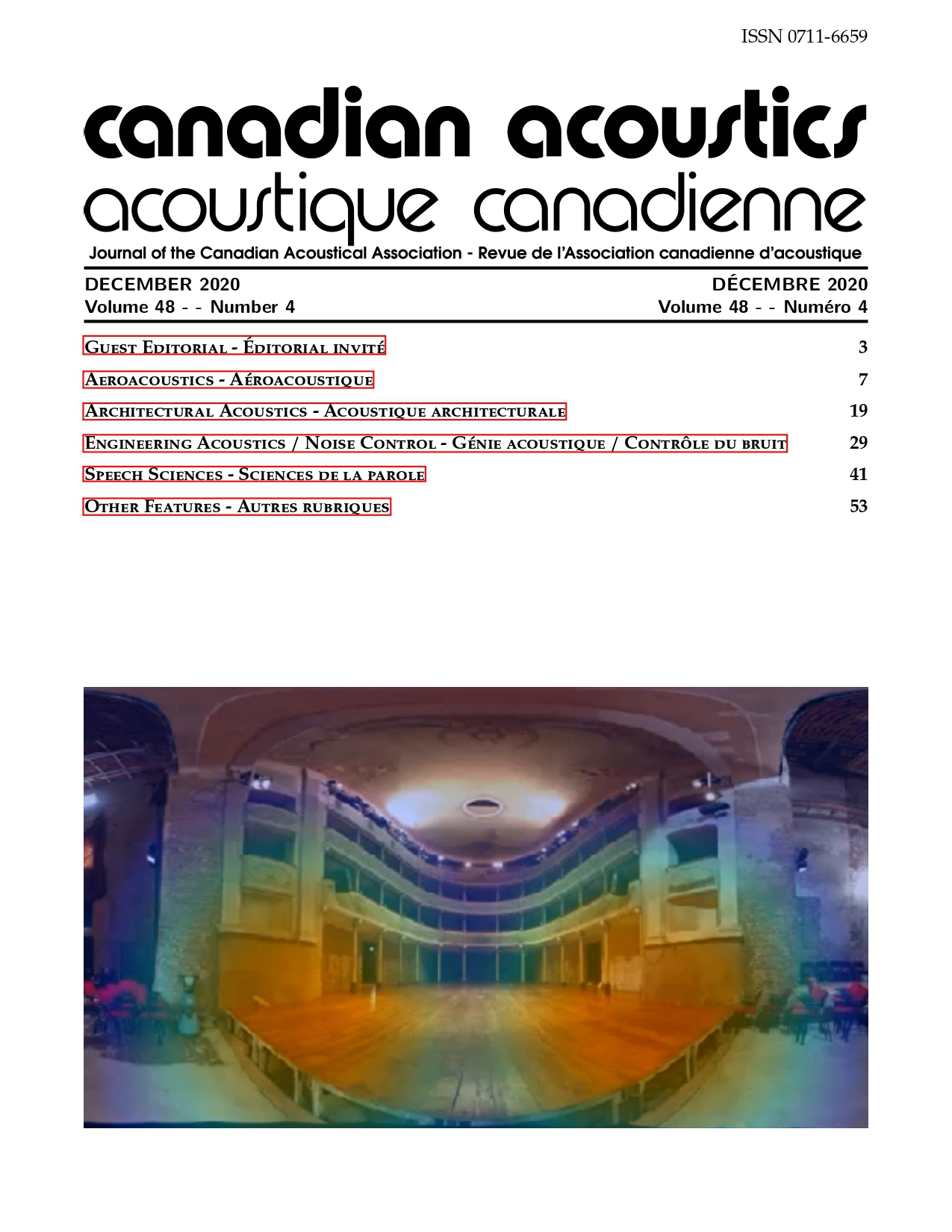Evolution of Some Microphone Arrays in Sound Field Reproduction. Application Inside Two Historical Theatres
Keywords:
Room acoustics, Auralization, Italian theatres, impulse response, Microphone arraysAbstract
Performing arts spaces characterize a specific group of buildings always subject to intense studies under architectural other than acoustics point of view. In Italy, the acoustics of historical theatres, as Baroque Opera houses and Renaissance concert halls, is nowadays considered the most important physical aspect of the architectural heritage. This paper analyzes the acoustical characteristics of some important Italian theatres. In order to precisely compare the analogies of the selected theatres, only the architecture realized during the 18th century has been considered. The acoustics features have been obtained by using a pre-equalized omnidirectional sound source, which emitted an exponential sound signal (ESS) acquired by a dummy head and a B-Format microphone. This technique satisfies the standard requirements of the ISO 3382:2009 and has been compared with the innovative process realized by using a 32-channel individually controlled microphone (i.e. em32 Eigenmike®). This new generation of the microphone is able to create a 3D auralization by synthesizing any real-time variable directivity pattern. In this way, both graphical analysis and 3D sound playback can be the resulting methods of how to show the room impulse response (RIR) data measured inside any performing arts space.
Additional Files
Published
How to Cite
Issue
Section
License
Author Licensing Addendum
This Licensing Addendum ("Addendum") is entered into between the undersigned Author(s) and Canadian Acoustics journal published by the Canadian Acoustical Association (hereinafter referred to as the "Publisher"). The Author(s) and the Publisher agree as follows:
-
Retained Rights: The Author(s) retain(s) the following rights:
- The right to reproduce, distribute, and publicly display the Work on the Author's personal website or the website of the Author's institution.
- The right to use the Work in the Author's teaching activities and presentations.
- The right to include the Work in a compilation for the Author's personal use, not for sale.
-
Grant of License: The Author(s) grant(s) to the Publisher a worldwide exclusive license to publish, reproduce, distribute, and display the Work in Canadian Acoustics and any other formats and media deemed appropriate by the Publisher.
-
Attribution: The Publisher agrees to include proper attribution to the Author(s) in all publications and reproductions of the Work.
-
No Conflict: This Addendum is intended to be in harmony with, and not in conflict with, the terms and conditions of the original agreement entered into between the Author(s) and the Publisher.
-
Copyright Clause: Copyright on articles is held by the Author(s). The corresponding Author has the right to grant on behalf of all Authors and does grant on behalf of all Authors, a worldwide exclusive license to the Publisher and its licensees in perpetuity, in all forms, formats, and media (whether known now or created in the future), including but not limited to the rights to publish, reproduce, distribute, display, store, translate, create adaptations, reprints, include within collections, and create summaries, extracts, and/or abstracts of the Contribution.


